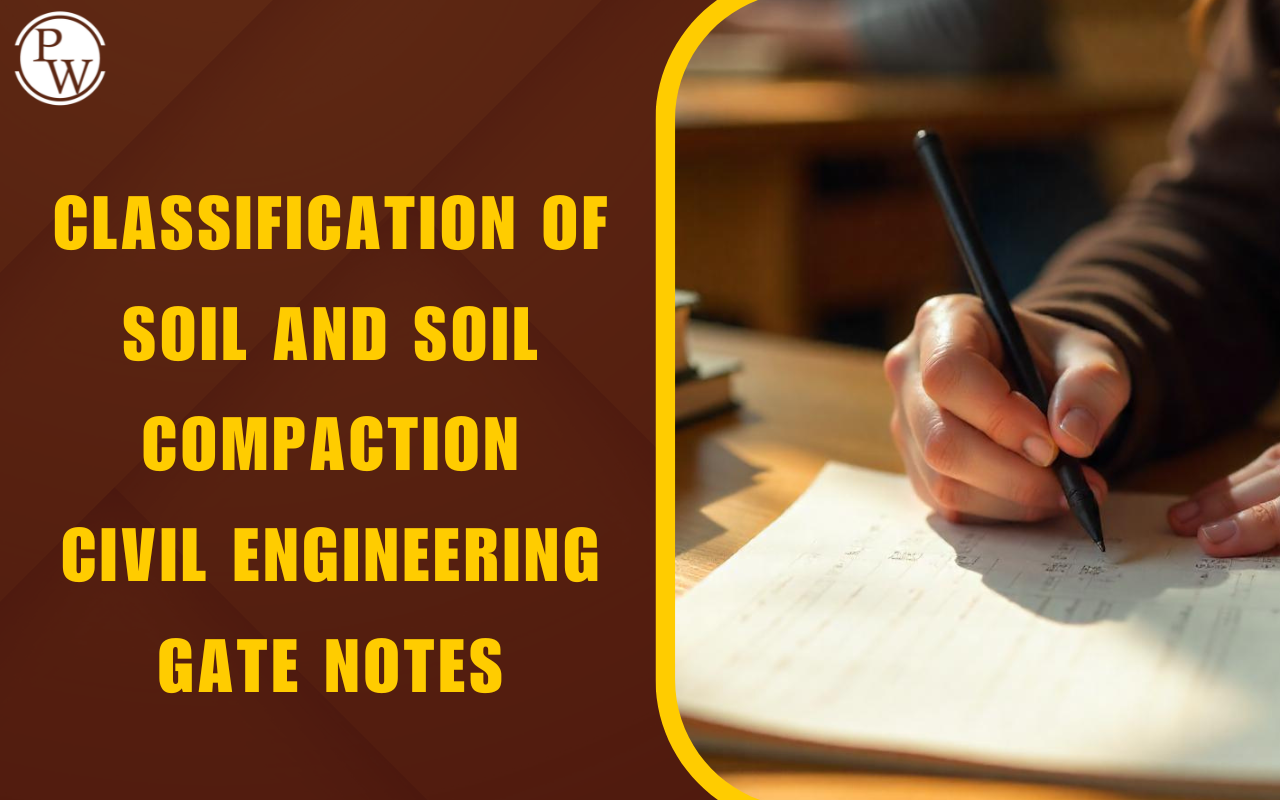
Civil Engineering Environmental Impact: Civil engineers can contribute to the growing global concern over the environment. Lagan Construction Group, a global civil engineering and construction company, provides essential environmental considerations for civil engineers. Since the need for infrastructure is expected to increase shortly, civil engineers have the power to make significant changes that will reduce carbon emissions.
There can be no doubt that this necessitates a radical shift in sustainable thinking and quick action. Civil engineers can make a few environmental considerations to lessen the environmental impact of construction. Read GATE Civil Engineering Exam 2024Enhance Energy Efficiency
Energy is heavily used in the construction sector. Building and construction alone account for 40% of all energy consumption in the U.S. The U.S. Department of Energy has provided statistics that support this.- The entire building cycle, including the extraction of construction materials, transportation of those materials, use of equipment and tool installations, and even disposal of waste materials, requires energy. Since there is so much energy, it accounts for almost 6% of construction costs.
- Although it is nearly impossible to know how much energy will be used throughout the construction process cycle, every civil engineer must prioritize energy efficiency in every stage of construction, especially when using non-renewable energy sources like oil and gas.
- It was updating machinery and equipment and fixing it as soon as it broke. Using outdated, worn-out, or damaged tools and equipment takes much more energy and slows down building projects. Energy consumption increases with the speed of construction.
- They are building houses that use less energy.
- Employing construction methods and designs that use less energy.
- Utilize construction vehicles and heavy machinery that are energy-efficient and are built to perform well while using less energy. Using a wheeled excavator instead of a tracked one, for instance, since they are more fuel-efficient
- installing H.V. systems, lighting fixtures, and other utilities that use less energy.
- Retro-commissioning of the structures to enhance system performance and effectiveness.
- We are utilizing and putting in place renewable energy sources.
Constructing Less Waste
The construction sector is responsible for 50% of landfill waste. This makes it clear that proper planning, resource tracking, and monitoring are required to reduce waste. These wastes cause faster resource depletion and environmental damage.- Civil engineers have many options for reducing construction waste and, consequently, the amount of debris disposed of in landfills. Before any construction work starts, ensure an adequate waste management plan has been created.
- Second, think about establishing waste reduction objectives that all parties can meet. Finding ways to maximize the use of a few of the materials as well as recycle and reuse the construction equipment
Other methods comprise:
- We are minimizing the scrap pile on construction sites through careful planning. Everything needs to be accurately measured, cut out, and ordered in the proper quantities and sizes.
- Keeping materials safely stored will prevent the need to replace lost or stolen items.
- Utilizing durable materials and alternative building techniques to promote recycling and reuse. For instance, instead of using plywood or lumber for the formwork, you can use modular metal form processes that can be reused.
- Select eco-friendly or minimally packaged products to reduce the waste you produce and need to dispose of.
- Obtain construction supplies from vendors who recognize returns or pay for unused materials.
Green Materials Utilization
Sustainable construction entails incorporating eco-friendly materials into all phases of the building process, including design, material extraction, construction, and operation. Green materials are made of renewable resources whose long-term effects on the environment have been carefully considered.- Given that the cost of materials is rising daily and these materials are not only cost-effective but also environmentally friendly, civil engineers may consider going green. Green materials aid in energy conservation. They lessen the costs associated with building maintenance and the adverse effects of construction on the environment up until the point of disposal.
- Green building materials will significantly lower the nearly 3 billion metric tons of raw materials that the global building and construction industry consumes annually.
- Bamboo trees, rammed earth, straw bells, reclaimed steel, recyclable plastic, precast slab concrete, reclaimed wood, hempcrete, and others are environmentally friendly building materials that can be used for residential and commercial structures.
Almost Energy-zero Buildings
A more recent term is nearly zero-energy buildings (NZEBs). Fortunately, the idea spread quickly. The idea was developed in Europe and just recently made its way to the American construction industry, and it appears to have been around for a while.- An advanced idea known as "nearly zero" basically states that buildings should be planned and constructed with low energy costs close to matching the site's renewable energy production. As a result, the structure will have a lower carbon footprint than a conventional structure.
- The construction industry significantly contributes to soil, water, and air pollution. These pollutants can pose a significant threat to the environment, and if the appropriate controls and mitigation strategies are not implemented, adverse environmental effects may result. Civil engineers can plan and build more environmentally friendly buildings without adding to the already high levels of pollution. These things will contribute to a cleaner environment and a better future.
Buildings Significantly Impact Climate Change
More than 40% of the energy we use worldwide and a third of the greenhouse gas emissions come from our buildings. Both developed and developing parts of the world can attest to this. Most of these emissions are caused by the buildings' ongoing use of electricity, lighting, heating, and cooling. Buildings also produce some non-CO2 emissions, such as halocarbons. In the past, developed countries accounted for the majority of emissions. Still, developing nations are quickly catching up, and it is anticipated that emissions from buildings in recently emerging countries will soon surpass those from developed countries.Governments Can Also Assist
Governments have a responsibility to ensure that new construction considers the future. They must prioritize the construction and civil engineering industries in their climate change policies and plans. Each nation's government can support the construction industry by establishing reliable, attainable, and measurable energy performance standards and objectives. Additionally, training needs to be offered so that some skilled workers and adjudicators can evaluate the energy efficiency of buildings and guarantee that all techniques and technologies are being used. Education is essential in getting the building industry involved and motivated to meet emissions targets. Read GATE 2024 Civil Engineering PreparationCivil Engineering Benefits to the Economy
Reduced emissions from buildings are beneficial to the economy and its inhabitants. Globally, the building, renovation, and maintenance of commercial and residential structures account for approximately 25% of a country's GDP and employ approximately 10% of the workforce. There is a massive opportunity for new employment and companies to serve these drives and development objectives by increasing the quantity of measures to make buildings greener.Conclusion
Despite making great strides in recent years to reduce carbon emissions, the construction industry still has a significant negative impact on the environment. Buildings are thought to be responsible for close to 40% of CO2 emissions. This accounts for over a third of all emissions worldwide. Building operations make up 28% of these, with construction materials and buildings making up the remainder. The primary sources of these emissions are lighting, heating, cooling, and electricity, with most of the remaining emissions coming from the three most common building materials—steel, concrete, and aluminum. Civil engineers must work to reduce all emissions so that the pre-industrial level limit of 2°C (or ideally a 1.5°C target) is met by 2040 to meet the net-zero target set forth by the International Energy Agency (IEA). If we want to reach net zero by 2050, that means a 6% annual decline. You should be able to understand the most crucial environmental factors for civil engineers after reading this article. Explore the affordable PW GATE Civil Engineering Online Courses for effective exam preparation. These courses are based on the latest GATE 2024 CE syllabus and aim to provide exam-focused study materials, mock tests and other relevant resources.Civil Engineering Environmental Impact FAQs
Is GATE Civil Engineering difficult?
In contrast to electrical engineering, where some subjects receive more weight than others, civil engineering's weighting is almost uniform. As a result, GATE Civil Engineering is the hardest of the bunch.
What environmental issues are of concern to engineers?
Environmental engineers research how technological innovations affect the environment, focusing on regional and global environmental problems like acid rain, climate change, ozone depletion, water pollution, and air pollution from industrial and automobile exhausts
What justifies the importance of environmental engineering in civil engineering?
A construction project may benefit from the assistance of an environmental engineer to develop and implement alternative strategies for the design of buildings, the handling of hazardous waste, the transportation of water, and other engineering-related activities that will reduce unintended consequences.
Can a civil engineer take the GATE?
The GATE Civil Engineering exam is a national entrance exam for applicants with Civil Engineering as their specialty who want to pursue post-graduate studies at NITs, IITs, or foreign universities or work in PSUs.
What job opportunities are available after passing the GATE exam for Civil Engineering?
PSUs may also make offers to Tech or M.E. graduates with a valid Gate score. Many PSUs are now hiring candidates with high GATE scores. GATE scores are accepted by BHEL, IOCL, NTPC, ONGC, SAIL, HPCL, PGCIL, BARC, and over 200 other public sector organizations in the country.
Talk to a counsellorHave doubts? Our support team will be happy to assist you!

Free Learning Resources
PW Books
Notes (Class 10-12)
PW Study Materials
Notes (Class 6-9)
Ncert Solutions
Govt Exams
Class 6th to 12th Online Courses
Govt Job Exams Courses
UPSC Coaching
Defence Exam Coaching
Gate Exam Coaching
Other Exams
Know about Physics Wallah
Physics Wallah is an Indian edtech platform that provides accessible & comprehensive learning experiences to students from Class 6th to postgraduate level. We also provide extensive NCERT solutions, sample paper, NEET, JEE Mains, BITSAT previous year papers & more such resources to students. Physics Wallah also caters to over 3.5 million registered students and over 78 lakh+ Youtube subscribers with 4.8 rating on its app.
We Stand Out because
We provide students with intensive courses with India’s qualified & experienced faculties & mentors. PW strives to make the learning experience comprehensive and accessible for students of all sections of society. We believe in empowering every single student who couldn't dream of a good career in engineering and medical field earlier.
Our Key Focus Areas
Physics Wallah's main focus is to make the learning experience as economical as possible for all students. With our affordable courses like Lakshya, Udaan and Arjuna and many others, we have been able to provide a platform for lakhs of aspirants. From providing Chemistry, Maths, Physics formula to giving e-books of eminent authors like RD Sharma, RS Aggarwal and Lakhmir Singh, PW focuses on every single student's need for preparation.
What Makes Us Different
Physics Wallah strives to develop a comprehensive pedagogical structure for students, where they get a state-of-the-art learning experience with study material and resources. Apart from catering students preparing for JEE Mains and NEET, PW also provides study material for each state board like Uttar Pradesh, Bihar, and others
Copyright © 2025 Physicswallah Limited All rights reserved.








